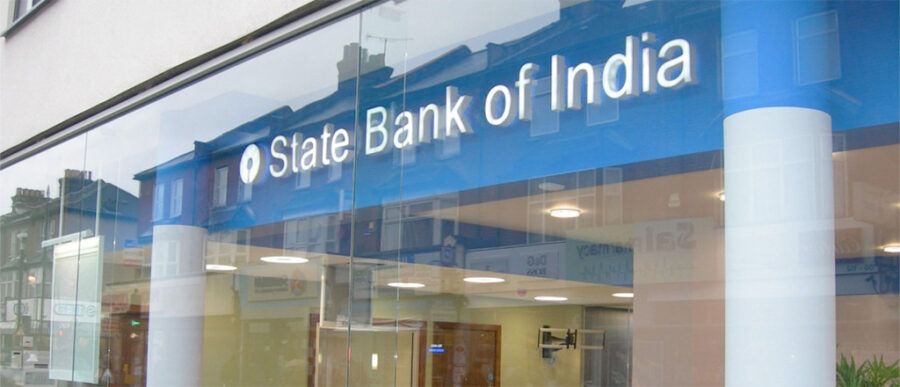Leading the largest bank in the world’s largest democracy presents unique opportunities and challenges to test innovation at scale and deepen market penetration of technology-enabled financial products and services. Rajnish Kumar, the chairman of the State Bank of India (SBI), is determined to prove that a public sector bank — where the government holds more than a 50% stake — could foster innovation in technology and leadership through an ecosystem of partnerships.
Kumar’s four decades at SBI will stand him in good stead. The 212-year-old bank brings unparalleled scale: It has more than 430 million customers, assets of Rs. 35 trillion ($0.5 trillion), 260,000 employees and 22,500 branches in India and globally. Kumar took over as the bank’s chairman in October 2017 for a three-year term. He was previously managing director (national banking group) of the bank, where he headed retail banking and initiatives in payments and digital banking.
Under Kumar, SBI is harnessing technology to meet its mandate as a public sector bank to advance economic development in the country, and to bring prudence in lending with early warning signals on bad loans and for fraud prevention. Its latest innovation is YONO (You Only Need One), a mobile app launched a year ago that packs banking services with “lifestyle” shopping features, with plans to extend it beyond individual customers to the agriculture and corporate sectors.
Kumar shared details on YONO and other technology initiatives at SBI in a recent talk titled “Technology and the Future of Banking” at Wharton’s Mack Institute for Innovation Management. Wharton management professor Harbir Singh, who is also co-director of the Mack Institute and vice dean of Wharton’s Global Initiatives, moderated that event. Kumar also shared insights into the bank’s growth strategies and larger issues facing Indian banks such as bad loans and liquidity pressures with Knowledge at Wharton, and in a conversation with Wharton management professor Saikat Chaudhuri, who is also executive director of the Mack Institute.
Below are five highlights from the insights Kumar shared during his visit to Wharton:
Purging Bad Loans
Non-performing loans at Indian banks, or NPAs, have assumed alarming proportions in recent years. According to statistics from the Reserve Bank of India, India’s central bank, Indian banks had combined NPAs of Rs. 3.2 trillion ($46 billion) as of March 2018. Public sector banks accounted for 85% of that total, or Rs. 2.7 trillion ($39 billion).
But Kumar said he believes “the worst is over of the NPAs” for Indian banks. He sees this for SBI, too, which had incurred a loss in its last financial year (2017-2018), driven substantially by bad loans. “The peak was March 2018,” he said. “We had a very bad time and cannot continue to be in the same mode. Most of our large accounts became NPAs.”
“We’re redesigning the customer journey — from physical at branches leading to digital, it is becoming digital leading to physical.”
SBI’s loan portfolio is now much healthier. “The slippages are much less” and that is evident in the latest financial results for the six-months ending September 2018, Kumar said. After it incurred a net loss of Rs. 6,547 crore ($935 million) last year and this year’s first quarter, it was back in the black in the latest quarter ending September 2018 with a profit of Rs. 945 crore ($135 million). Its NPAs too emerged from double-digit territory; its GNPA, or gross NPA ratio, dropped to 9.95% in the latest quarter, down three-quarters of a percentage point from the prior quarter.
Kumar attributed the improved loan portfolio performance to large technology programs SBI has implemented for risk management and fraud prevention in recent years. “We have deployed early warning signals for recognizing NPAs, and data analytics to analyze behavior patterns for small loans or personal loans,” he said
While Kumar is optimistic about the health of SBI’s loan portfolio, the cheer does not extend across India’s banking industry. According to the RBI’s Financial Stability Report of June 2018, “macro-stress tests indicate that … the scheduled commercial banks’ GNPA ratio may rise from 11.6% in March 2018 to 12.2% by March 2019.”
Currency and Liquidity Pressures
India’s financial system has faced liquidity pressures for most of the past year. While the initial trigger for that was a rush of advance tax payments by corporations — prompting the RBI to intervene — debt defaults by Infrastructure Leasing & Financial Services, a major infrastructure sector lender, constrained liquidity further.
Mutual funds and other investors shunned non-banking finance companies (NBFCs), which happen to be strong backers of select sectors such as real estate and construction. After the default at IL&FS, corporations that earlier invested their short-term monies in mutual funds withdrew, which meant mutual funds that traditionally bought commercial paper issued by the NBFCs could no longer do so, Kumar explained.
According to Kumar, the fears emerging from that scenario are overstated and the situation has begun to improve. “Overall liquidity is all right,” said Kumar. “The mutual fund industry is now not financing the NBFCs, so it seems like we have a liquidity crunch. Otherwise we are okay.”
“We provide [fintechs] the scale and they provide the technology and the solutions at a fraction of the cost that we would otherwise have to incur, so it is a win-win situation.”
Meanwhile, the Indian rupee weakened against the U.S. dollar, which Kumar attributed to higher than anticipated crude oil prices and the U.S. Federal Reserve raising interest rates. However, those currency pressures too have eased, he noted. Crude oil futures prices (WTI crude on the NYMEX) have dropped from their October high of $76.41 a barrel to $54.29 as of Jan. 30.
“Every five to 10 years there is a dip in the rupee; I’ve seen it regularly,” he said. “This time it is all because of crude oil prices, and the U.S. Federal Reserve raising interest rates. But now, crude prices are stabilizing, so rupee will also stabilize around Rs. 70 to a dollar.” Indeed, the rupee closed at Rs. 71.12 to the U.S. dollar on Jan. 30.
Infusing Technology
SBI has three major technology programs with about 500 projects underway at any point in time. They are in risk management, customer relationship management and YONO, its mobile app, Kumar said. The bank has 30 million mobile banking customers and 47 million internet banking customers, but there is huge potential yet to be tapped, he noted, pointing to India’s smartphone user population of around 500 million.
“We’re redesigning the customer journey — from physical at branches leading to digital, it is becoming digital leading to physical,” Kumar said. “We are reimagining the bank to make it entirely digital. It is not as if incumbents and public sector banks cannot be innovative. Some say that if you are a public sector bank you cannot be innovative. That is not true. We are leading in digital banking [in India], and our YONO mobile platform has established us as a leader in India and perhaps also globally.”
Kumar recalled how the bank’s experience with IT has changed since he joined the firm. “Until 1984, if we had to buy a PC, we needed to have union consent.” That situation is unimaginable today. In September, it introduced a “contract-less lending platform” for small and medium-size enterprises (SMEs), which will ride on the information available through their indirect tax payments and income-tax returns. “In less than one hour they can get a loan approved,” he said.
The bank spared no expertise in its YONO rollout: IBM, which developed the technology stack, and McKinsey, which provided business strategy consulting, are among its 85 partners that also include Amazon, Microsoft and every major Indian IT services company.
“If we ever have to acquire somebody, why not acquire a fintech rather than a bank?”
“The design principle of YONO is any transaction should not take more than three clicks,” Kumar said. “Right now, it takes between three to five clicks. A fund transfer can be done in two clicks, while you can open a fixed deposit account or buy insurance with five clicks.” The services on the YONO platform include pre-approved loans. “Within five minutes you can get a loan and it is paperless,” he said. “In two years, we will extend it beyond individual customers to agriculture, corporations and then YONO Global, which will enable overseas customers to easily open accounts.”
Collaboration as a Growth Lever
Kumar believes India’s economic engine will drive growth at SBI. “India is growing very fast — a GDP growth rate of more than 7.5% — and it has a young population,” he said. “We’ve not even touched the tip of the iceberg. Once you unleash the aspirations of the people, it creates its own momentum. You see growth opportunities in every sector — infrastructure, manufacturing, services, etc.” SBI also has the largest overseas presence of all Indian banks and it benefits from the Indian diaspora, he added.
Kumar told Wharton’s Chaudhuri that SBI is not planning any mergers or acquisitions in the near future. It has yet to digest its mergers last year with six Indian banks where it had been the majority shareholder. These include the State Bank of Mysore, and the State Bank of Bikaner & Jaipiur.
“It doesn’t make sense for us to acquire a bank in India, where we already have a customer base of more than 430 million,” he said. His ambitions lay elsewhere: “We have to be more cost efficient and more profitable. If we ever have to acquire somebody, why not acquire a fintech rather than a bank?”
Fintechs as Partners, Not Disruptors
Kumar said instead of perceiving fintechs as disruptors that may eat into SBI’s market share, he aims to have a “symbiotic relationship” based on collaboration. As it happens, SBI has an active program of working with fintechs. “Right now we are focused more on collaboration,” he said. “Selectively, we intend to invest in some of the fintechs. Some of the solutions they bring are cost-effective and beneficial to the bank. We provide them the scale and they provide the technology and the solutions at a fraction of the cost that we would otherwise have to incur, so it is a win-win situation. Whatever we do, the scale is huge.”



